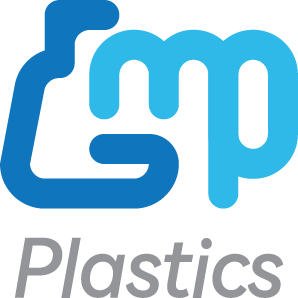Hello, science adventurers! 🚀 Today, we’re diving into the mysterious world of cell health—how scientists measure cell proliferation and viability using a fantastic tool called the Cell Viability Assay. Specifically, we’ll explore the MTT, XTT, and MTS Assays—three powerhouse techniques that reveal how happy (or stressed) our cells really are. So, buckle up and get ready for an experiment-packed ride! 🏃♂️🔬
What is Cell Viability, and Why Should We Care? 🧬
Cells are the tiny engines that keep our bodies running. But how do we know if they’re alive, thriving, or dying? Enter cell viability assays! These tests help scientists: ✅ Determine drug toxicity – Will a new drug hurt healthy cells? 💊 ✅ Measure cancer cell growth – Is a treatment stopping tumor cells? 🦠 ✅ Assess tissue engineering success – Are lab-grown cells surviving? 🧫 ✅ Study metabolic activity – How active are the cells under different conditions? ⚡
To get these answers, scientists use special color-changing chemicals (MTT, XTT, MTS) that react with live cells. Let’s break it down! 🎉
How Does the MTT/XTT/MTS Assay Work? 🏗️
The MTT, XTT, and MTS assays all work in a similar way—they rely on cellular metabolism to turn a special reagent into a colored product. The darker the color, the more living, active cells are present!
Step 1: Seed Cells in a 96-Well Plate 🧫
Scientists start by growing cells in tiny wells of a 96-well plate. Think of it like planting seeds in a garden. The cells settle, spread out, and get ready for testing. 🌱
Step 2: Treat Cells with Drugs or Other Stimuli ⚗️
Next, researchers add drugs, toxins, or growth factors to test how cells respond. Will they thrive, struggle, or die? Only time will tell! ⏳
Step 3: Add MTT/XTT/MTS Reagent & Incubate 🔬
Here’s where the magic happens! Scientists add one of these special reagents:
-
MTT – Turns into purple formazan crystals inside cells. 🟣
-
XTT – Forms orange formazan dye, directly dissolving in the media. 🟠
-
MTS – Similar to XTT but more stable and easier to use. 🟠✨
Cells with active metabolism convert these reagents into colorful products, revealing how many healthy cells are present! 🎨
Step 4: Measure Absorbance with a Plate Reader 📊
After incubation, scientists place the plate into a spectrophotometer to measure color intensity. More color = More living cells! ✅
Key takeaway:
-
High absorbance = More cell viability (healthy, happy cells!)
-
Low absorbance = Less cell viability (stressed or dead cells!)
What Do the Results Mean? 📈
By analyzing absorbance values, researchers can: ✔ Compare treated vs. untreated cells 📊 ✔ Determine drug toxicity levels 💊 ✔ Optimize dosages for safe treatment 🔬 ✔ Track cell growth over time ⏳
Applications of the MTT/XTT/MTS Assay 🌍
These assays are used in many areas of science, including:
1. Cancer Research 🦠
Scientists use these assays to test if new drugs can kill cancer cells while keeping healthy cells safe.
2. Drug Development 💊
Before testing on humans, researchers screen thousands of compounds to find the safest and most effective drugs.
3. Regenerative Medicine & Tissue Engineering 🏥
To grow new tissues, scientists check if cells are thriving in artificial environments.
4. Toxicology Studies ☠️
Environmental scientists use these assays to study the effects of pollutants and toxins on cells.
Why is the MTT/XTT/MTS Assay Important? 🏆
✔ Simple and Fast – Get results in just a few hours! ⏳ ✔ Quantitative – Provides real numbers, not just estimates. 📊 ✔ Cost-Effective – Uses standard lab equipment. 💰 ✔ Reliable – Widely used in research and pharmaceutical labs. 🏅 ✔ Versatile – Works for many cell types, including cancer, neurons, and stem cells. 🔬
It’s no wonder that these assays are essential tools in modern biology! 🌍🧬
Fun Fact: Your Cells Are Tiny Chemical Factories! ⚡
Did you know? Your cells are constantly breaking down and rebuilding molecules—producing energy, repairing DNA, and fighting off infections. The MTT/XTT/MTS assay takes advantage of this metabolic activity to measure cell health!
Wrapping It Up 🎉
And that’s a wrap, science lovers! The MTT, XTT, and MTS Assays are powerful tools that help scientists measure cell viability, test new drugs, and study diseases like cancer. By understanding how cells respond to different treatments, we can develop better medicines, improve regenerative therapies, and even protect the environment. 🌱🔬
So next time you hear about a new drug breakthrough, remember—it was probably tested using these amazing assays! Until next time, stay curious, keep experimenting, and as always… SCIENCE RULES! 🚀🔬




